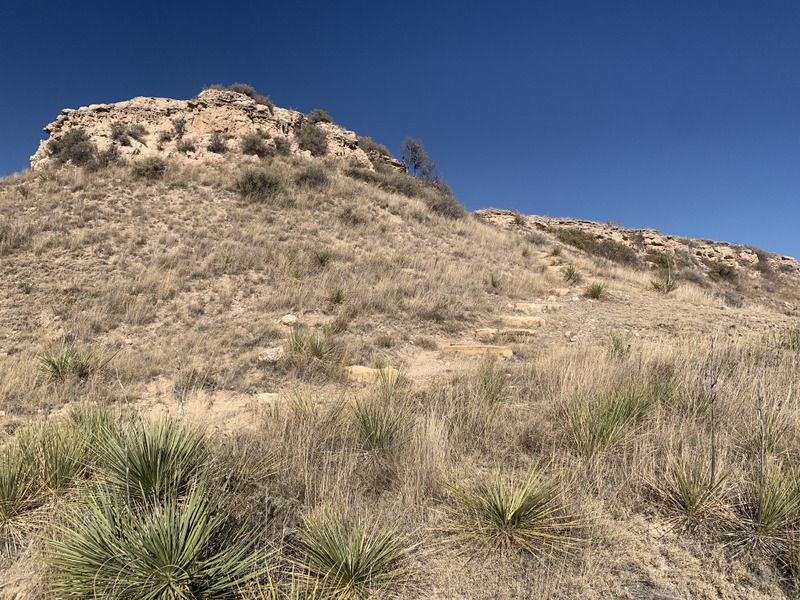
November 5 – 12, 2021
Narrative and Photos* by Aaron Steed
*Thanks to Dawn Macheca for some great photos!
Our inaugural Kansas Explorer trip aimed to sample a variety of habitats across ‘The Sunflower State,’ with special attention given to the various types of prairies on show. Chiefly among our targets was a selection of sparrows, longspurs, raptors, and other birds typical of the open country. It was timed primarily to allow us to witness the awe-inspiring spectacle of massive numbers of southbound waterfowl, cranes, and other waterbirds which gather at various wetland refuges across the state at this time of year.
Beginning in Wichita, home of the largest airport in Kansas, we then birded our way northeast to Topeka, where we stayed 2 nights. Tallgrass Prairie Preserve broke up the drive nicely and was our first birding stop of the tour. Only 4% of the once-widespread tallgrass prairie remains today, but the preserve comprises some 11,000 acres, protecting one of the largest remaining tracts in the US.
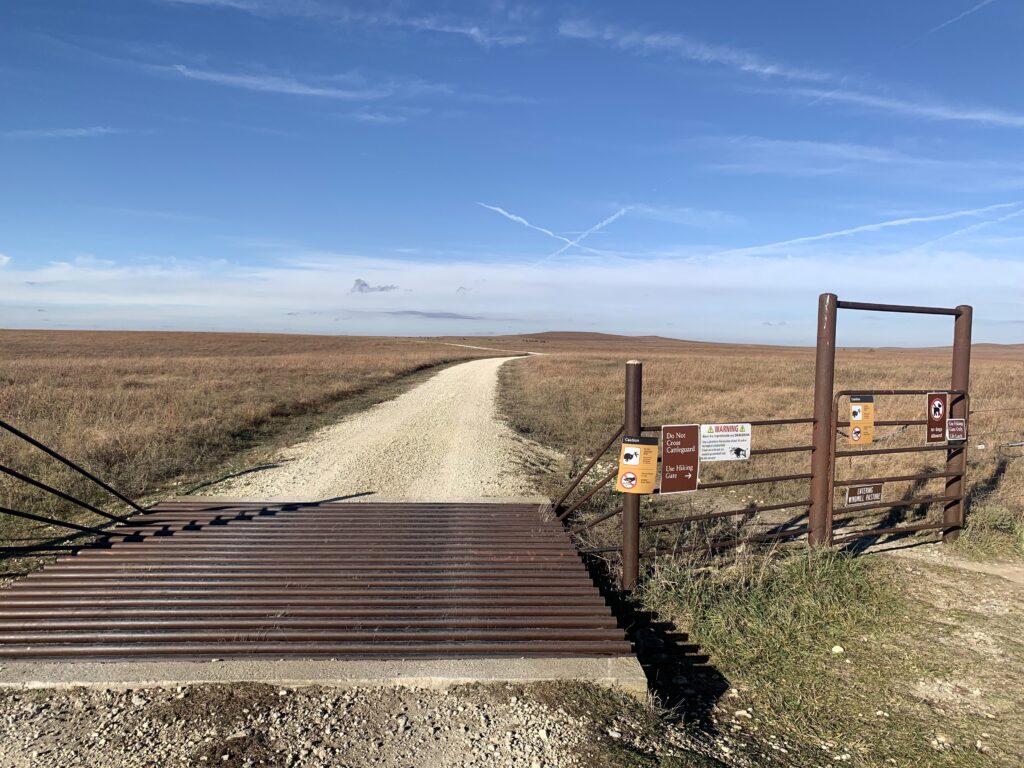
Tallgrass Prairie Preserve
Right near the start of the trail, we found a nice mix of sparrows to kick off the tour, most notably several Harris’s and Fox Sparrows, and Dark-eyed Juncos. Continuing through the prairie we further encountered Eastern Meadowlark, several flyover Lapland Longspur, Horned Lark, and American Tree and Savannah Sparrows.
Crossing into Windmill Pasture and coming to the rise in the hill, we were able to see a herd of about 65 bison grazing in the distance. While we didn’t have sufficient time to hike closer for better photographs, we had reasonable looks through the scope of these impressive, reintroduced grazers.

American Bison
After lunch at the only brewery in Emporia, we continued to Lyon State Fishing Lake. In the fields south of the lake we found a flock of about 30 Smith’s Longspurs, getting good inflight views of the white outer tail feathers and white ‘shoulder’ patch. At the lake, we had several more trip birds – Horned Grebe, Cackling Goose, Gadwall, Northern Shoveler, Bald Eagle, and a flock of over 100 Franklin’s Gulls.
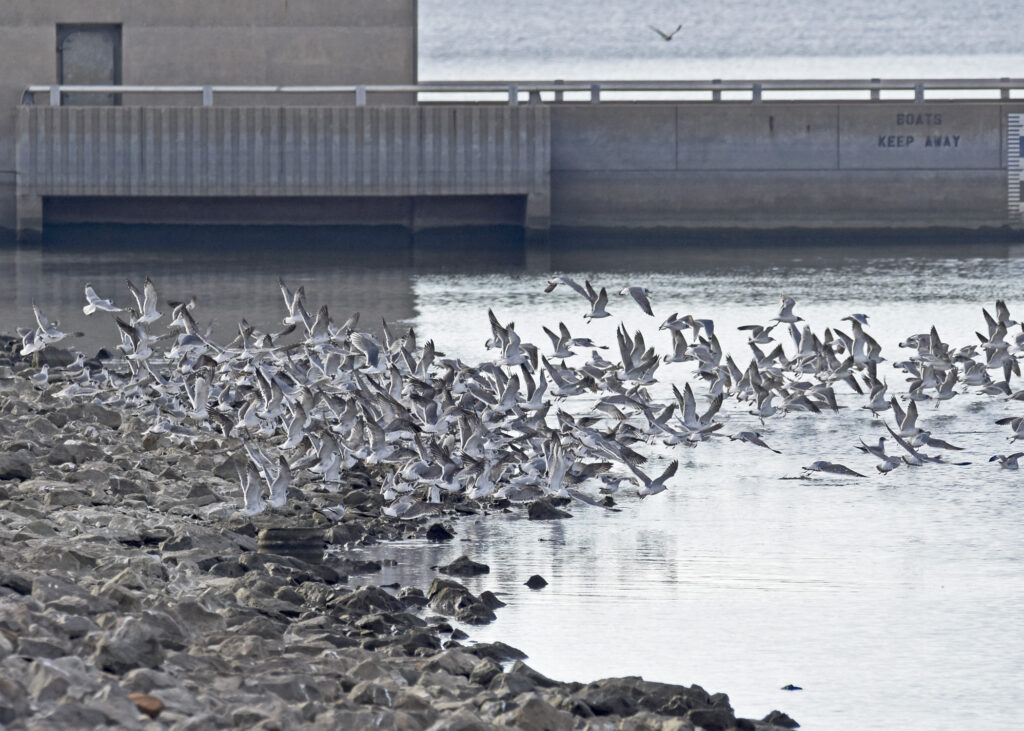
Franklin’s Gulls
by Dawn Macheca
A morning at the Baker Wetlands outside of Lawrence was one well spent, exploring the riparian woodlands and several miles of trail through restored wetland prairie and marsh.
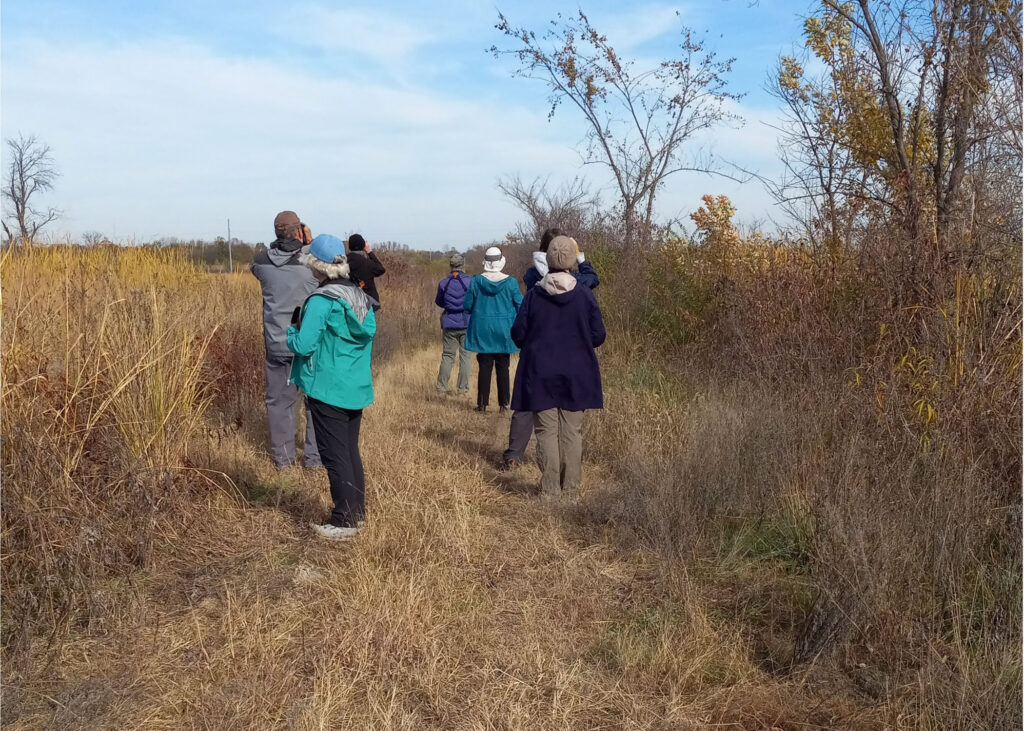
Birding at Baker Wetlands
The diversity of sparrows was excellent (10 species), and we found Lincoln’s, White-throated, Swamp, Field, White-crowned, and Fox Sparrows in addition to Orange-crowned Warbler and Sharp-shinned Hawk.
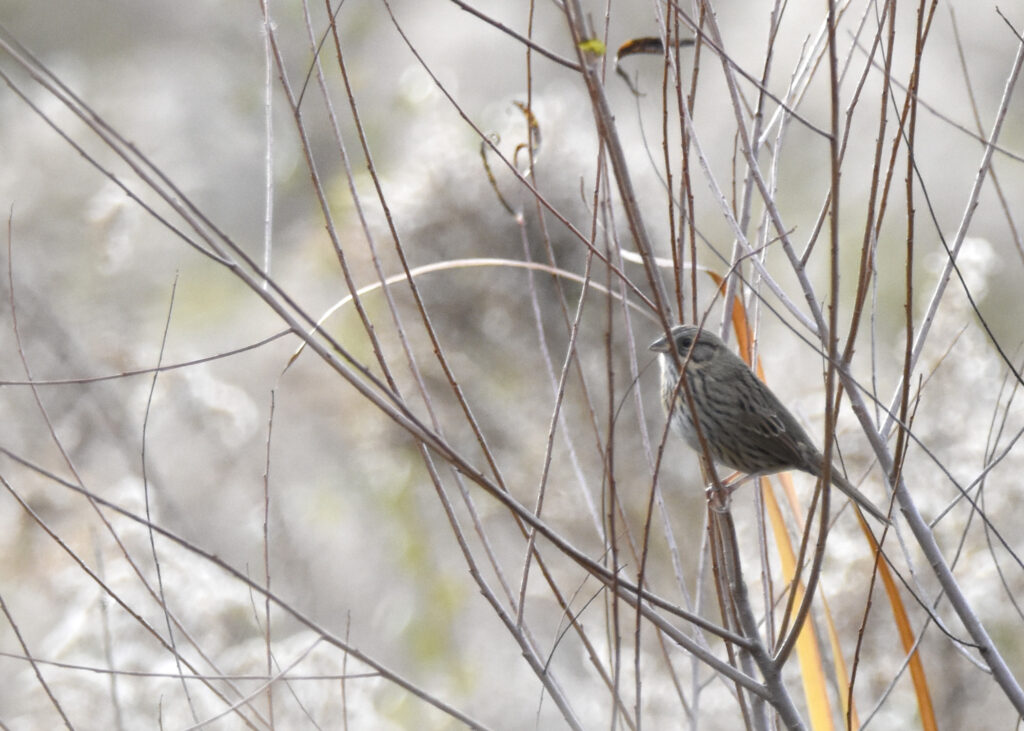
Lincoln’s Sparrow
by Dawn Macheca
We also racked up on many typical eastern woodland birds that we wouldn’t see much of in the more open expanses of western Kansas – Black-capped Chickadee, Tufted Titmouse, both Ruby-crowned & Golden-crowned Kinglets, White-breasted Nuthatch, and Brown Creeper.

Ruby-crowned Kinglet
by Dawn Macheca
After another excellent lunch at a brewery, this time in Lawrence (Free State Brewing), we visited Clinton & Perry Lakes, where we found a flock of about 200 American White Pelican. In amongst the hundreds of gulls and coots, we picked out Hooded & Red-breasted Merganser, and got great looks of American Pipits on the rocks near Perry dam.
Our following morning was spent back in the Clinton Lake area – where after only a few minutes of searching, we had incredible scope views of LeConte’s Sparrows up in an oak sapling, with as many as four in view at once!

LeConte’s Sparrow
A short while later, two Sedge Wrens posed obligingly in golden morning light mere feet from us. Other highlights were the trip’s first Merlin and a flock of about 70 Rusty Blackbirds. A Virgina Rail also called from the nearby marsh!
At Clinton Lake Dam we saw hundreds more Coot and Franklin’s Gull, plus our first Bonaparte’s Gull of the trip.

Franklin’s Gull by
Dawn Macheca

Bonaparte’s Gull
by Dawn Macheca
We found another Orange-crowned Warbler along with a distant flock of Cedar Waxwings, and we managed a closer look at Horned Grebe than we had previously.
With another great lunch at Tallgrass Tap House in Manhattan, this tour was quickly turning into an unofficial ‘Birds & Brews’ tour! Afterwards, we made our way to Great Bend.
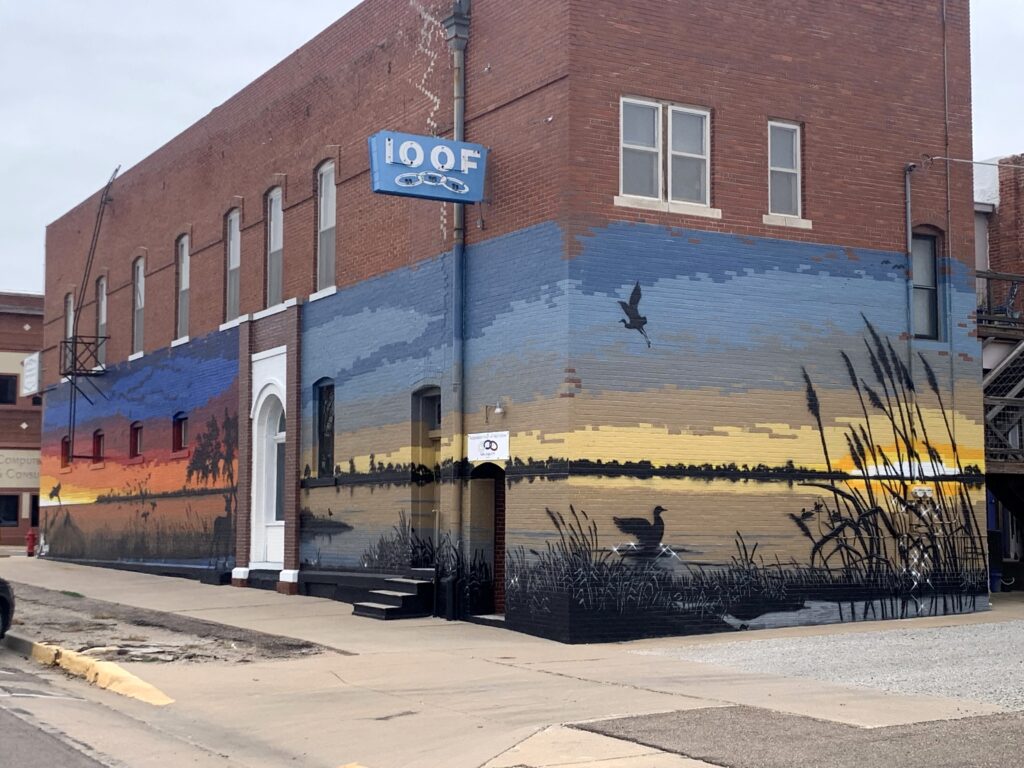
Cheyenne Bottoms mural in Great Bend
We had just enough day light left for a quick sampling of a small area of Cheyenne Bottoms, and we were treated to thousands upon thousands of birds – everywhere. Distant blackbird flocks stretched across the horizon in nearly every direction; skeins of geese and ducks rose and dropped back in on the impoundments. There were hundreds of Northern Pintail and American White Pelican, and we added some new shorebirds as well – American Avocet, Long-billed Dowitcher, and Least Sandpiper. An American Bittern flew low over the marsh in beautiful evening light and a short while later we found an immature Black-crowned Night Heron in a roadside ditch.
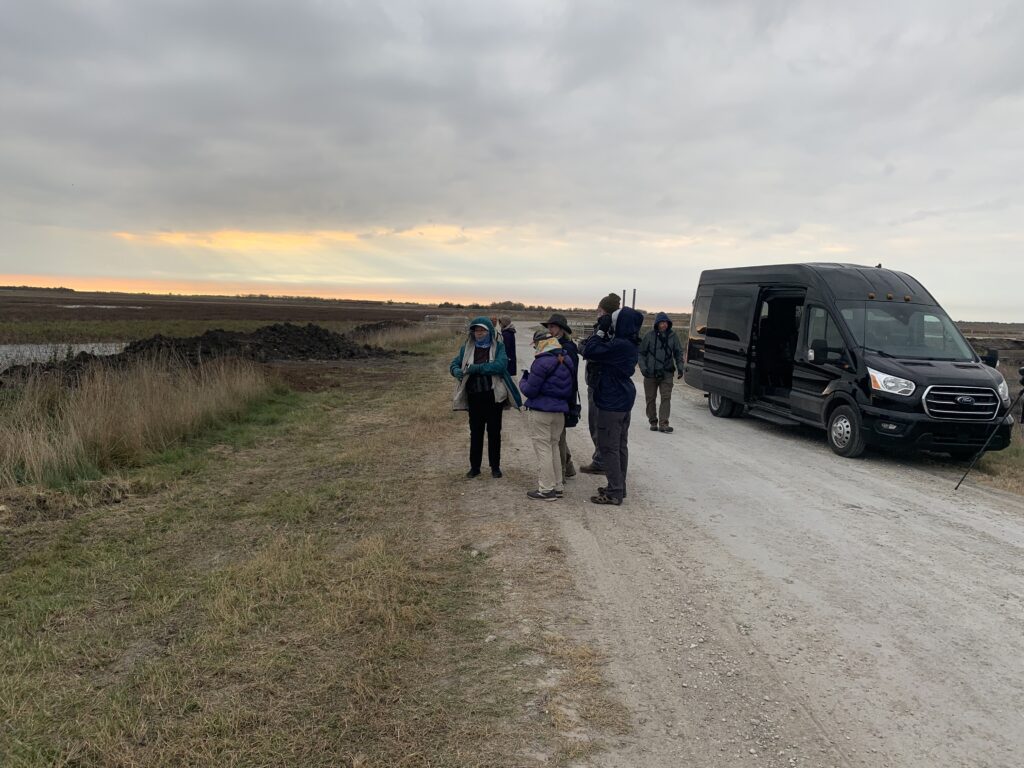
Group at Cheyenne Bottoms
Cheyenne Bottoms was so good that we went back the following morning, arriving shortly after sunrise. It was a lot colder and windier than the prior evening (therefore no mosquitoes this time) and with the morning sun behind us we were able to see and ID many more waterfowl in the marshes along the entrance road. There were loads of Northern Pintail, Gadwall, and a massive blackbird flock that was too large and too distant for us to get a reasonable estimate on numbers! There were birds once again just about everywhere. We had great views of American Bittern again plus a handful of Yellow-headed Blackbird (even seen via the van’s back up camera!). We saw more American Avocet, and Long-billed Dowitcher plus Dunlin and Wilson’s Snipe. We had distant views of a single White-faced Ibis, closer views of a soaring Harlan’s Red-tailed Hawk, and a single female Great-tailed Grackle all by itself was somewhat of an oddity.
Just before leaving for lunch, we found a distant group of 8 Whooping Cranes in pool 4A.
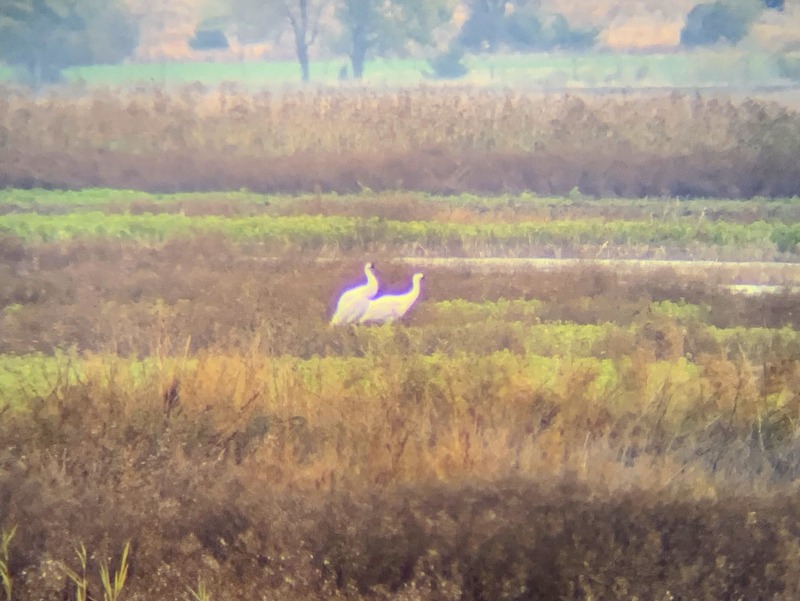
Whooping Cranes
We drove around on dirt roads attempting to view them closer, and we managed to do so (marginally).

Rennie Scoping Whooping Cranes
Setting the scope up in the back of our behemoth of a 15-passenger van, we were able to view them over the tall marshy and grassy vegetation which would have blocked our view had we been standing on the ground.
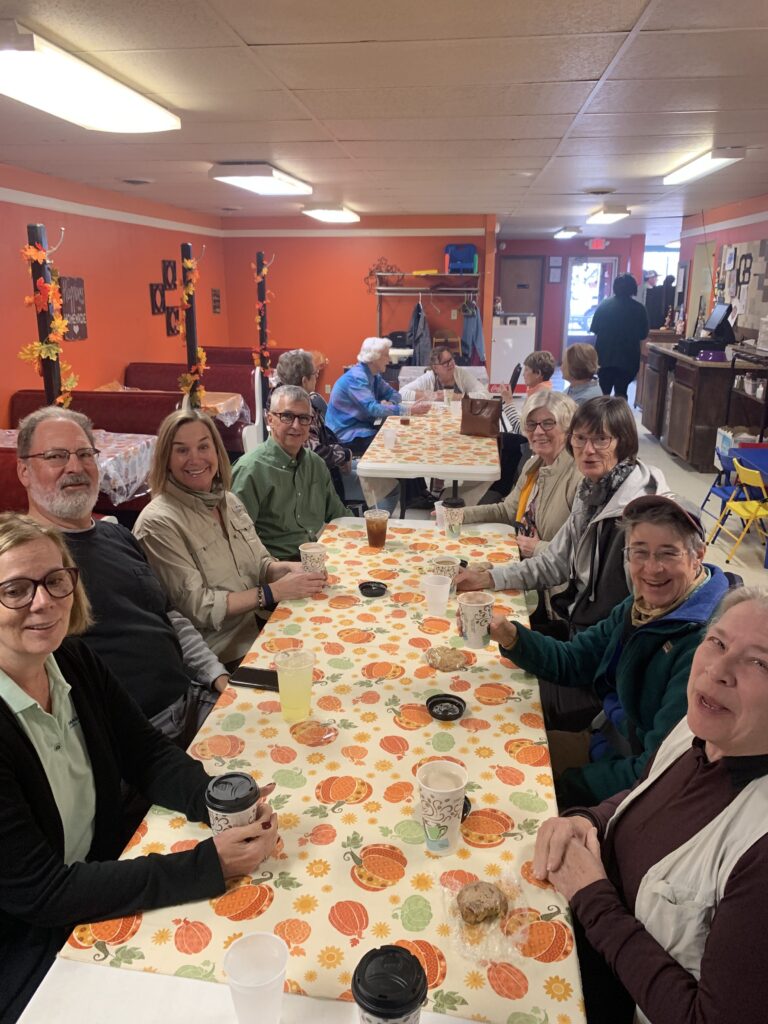
Lunch in Great Bend
After lunch in Great Bend, we headed to the amazing Quivira NWR. At Little Salt Marsh, we had impressive numbers of Greater White-fronted Geese, plus several hundred Ross’s Geese and smaller numbers of Snow. A Northern Harrier fed on a Ring-billed Gull carcass and nearby a Herring Gull looked to be doing the same! A couple Western Meadowlarks sat up cooperatively for nice scope views, allowing us to see the more extensive yellow coloration in the face, which is lacking in their eastern counterpart.
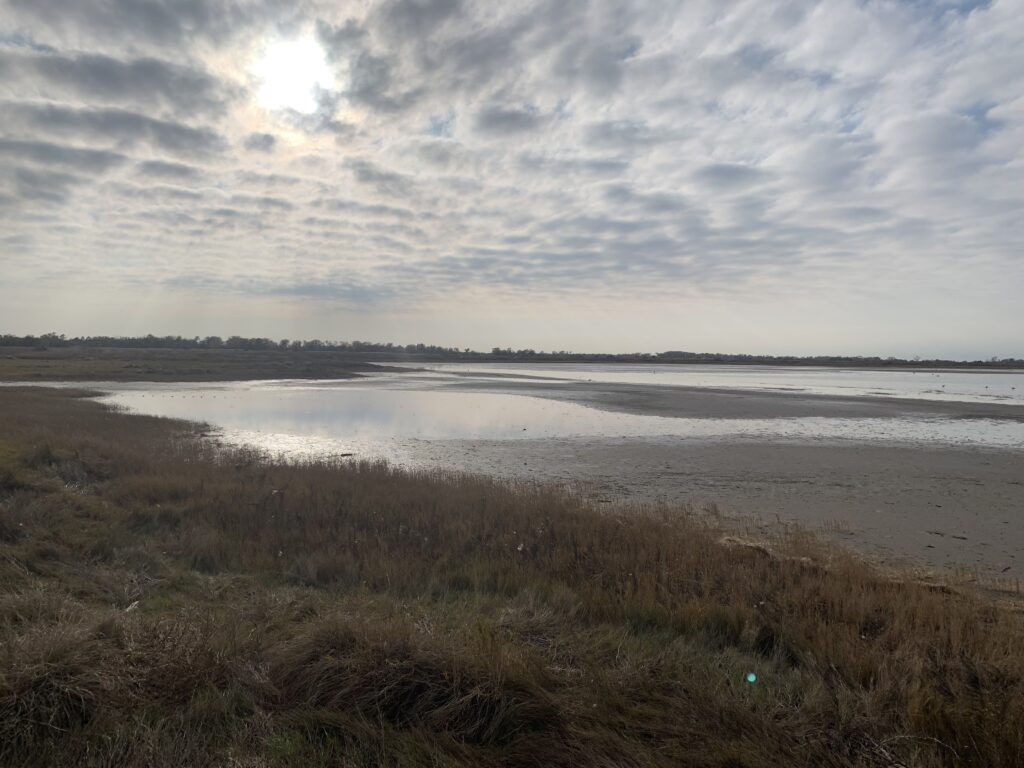
Little Salt Marsh
Park Smith Lake had a nice duck selection, and the afternoon light made for lovely viewing – over 20 Canvasback (mix of both sexes) plus our best views yet of American Wigeon, Green-winged Teal, and Bufflehead.
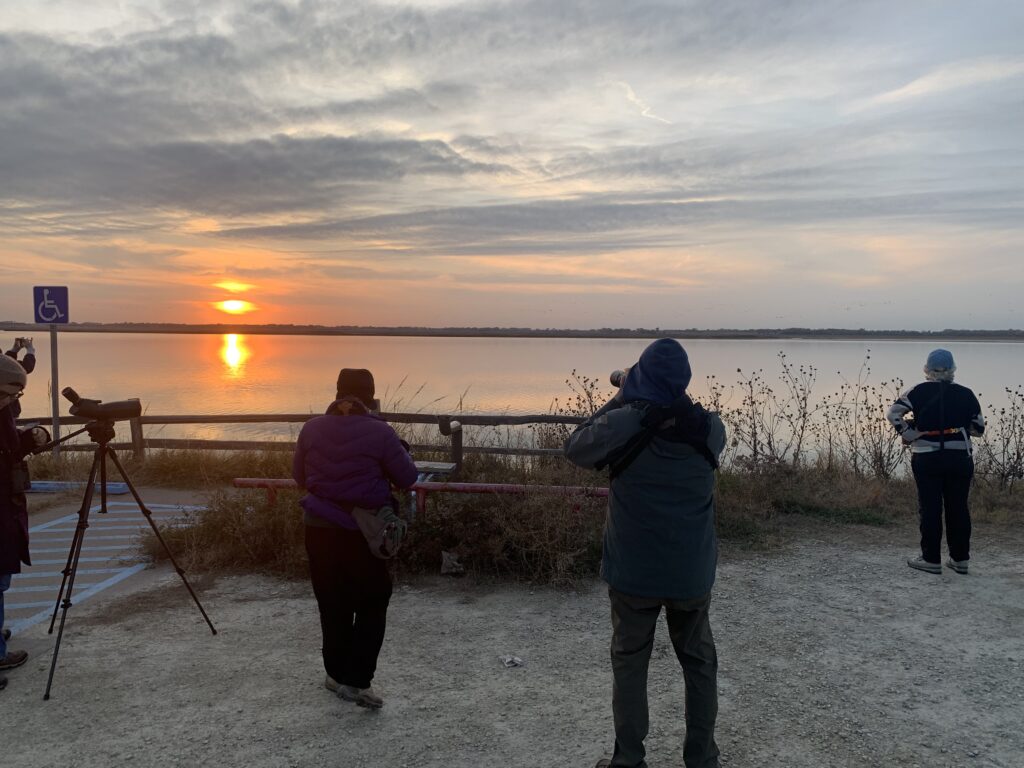
Group at Big Salt Marsh Quivira NWR
With the light fading, we made our way quickly to Wildlife Drive and Big Salt Marsh to be in position to watch the flocks of Sandhill Cranes coming into roost. The spectacle did not disappoint – we were treated to an incredible sunset with the air full of approximately 6,000 bugling Sandhill Cranes! An unseen predator or disturbance suddenly caused the thousands of Greater-white Fronted Geese to suddenly take off, and the collective whoosh of their wingbeats was truly impressive to hear. As the light faded, we were able to pick out several Short-eared Owls hunting over the marshes – a spectacular end to an amazing day!
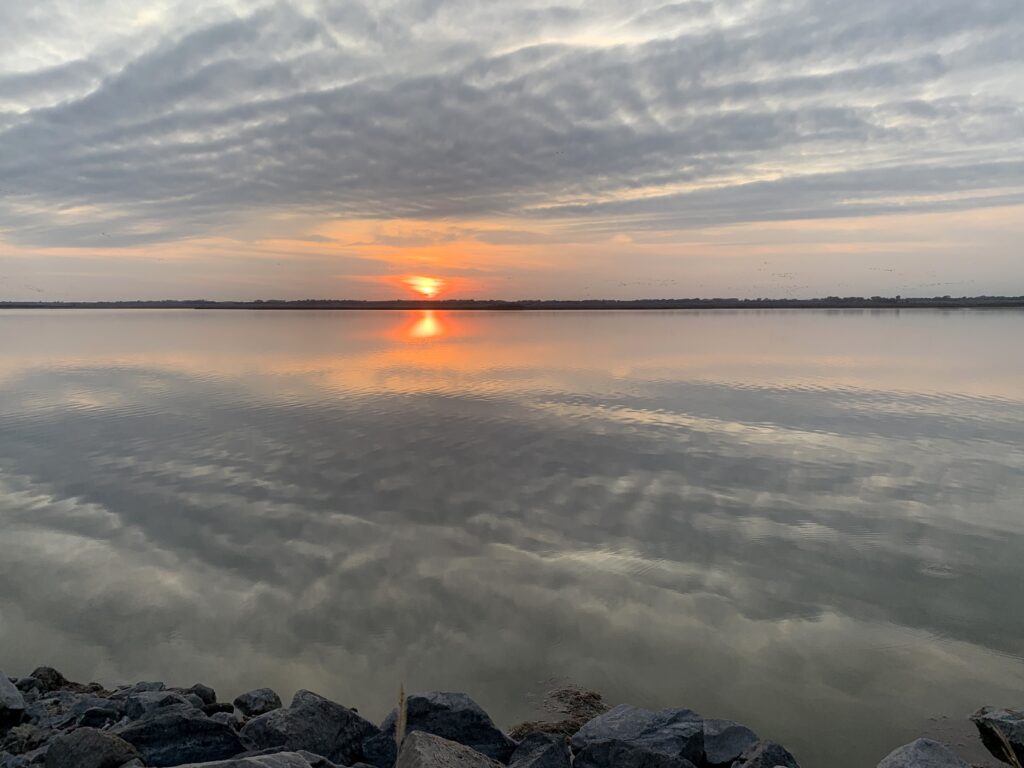
Sunset at Quivira NWR
After checking out the next morning we drove toward Hugoton and the southwestern corner of the state. A stop at Clark State Fishing Lake nicely broke up the drive, and the sudden change in landscape as we dropped into the sagebrush canyonlands around the lake was nothing short of dramatic.

Clark SFL
We found more Rusty Blackbirds, Bald Eagle, a good-sized flock of American Robins, along with a single Townsend’s Solitaire that never allowed more than quick views as it flew between junipers, flashing the greenish yellow stripe in the wing. We were able to compare both Red-shafted and Yellow-shafted Flickers here, and we added Hairy Woodpecker to our list as well. On the drive out we managed to find a Loggerhead Shrike along the roadside and later, a large flock of Red-winged Blackbirds fled what was to be our only Prairie Falcon of the trip. We managed great views of its black ‘armpits’, even though we were looking through the van windows.
After lunch in Liberal, we spent our afternoon birding around the town of Elkhart. A Rough-legged Hawk flew right across the road in front of the van and we all eventually got great views of the black belly and square-shaped carpal patches, and a white tail with a large black band at the tip. The WTP (water treatment plant) in town had a small selection of ducks including the trip’s first Lesser Scaup plus loads of Western Meadowlarks and several bathing White-crowned Sparrows (Gambel’s subsp.).

White-Crowned Sparrow
by Dawn Macheca
We visited the Elkhart Prairie Dog town, and aside from the ‘dogs,’ we saw lots of Horned Larks and got a great close look at our first Ferruginous Hawk! Driving west along the Oklahoma and Kansas border we encountered a small herd of Mule Deer, a new mammal for our trip. We finished our day with another brilliant sunset viewed from ‘3 Points’ – the juncture of Colorado, Kansas, and Oklahoma. As the sun set and the moon rose, we were also able to see 3 planets in the sky – Jupiter, Venus, and Saturn. We viewed each one through the scope, which allowed us to see several of Jupiter’s moons as well as the rings of Saturn!
Our final full day was spent ‘cleaning up’ as best we could. Exploring the vast Cimarron National Grasslands, Kansas’s largest tract of public land. The Historic Santa Fe trail added another dimension of significance to our day and the interesting geology of the surrounding landscape meant that there was always something to hold our interest.
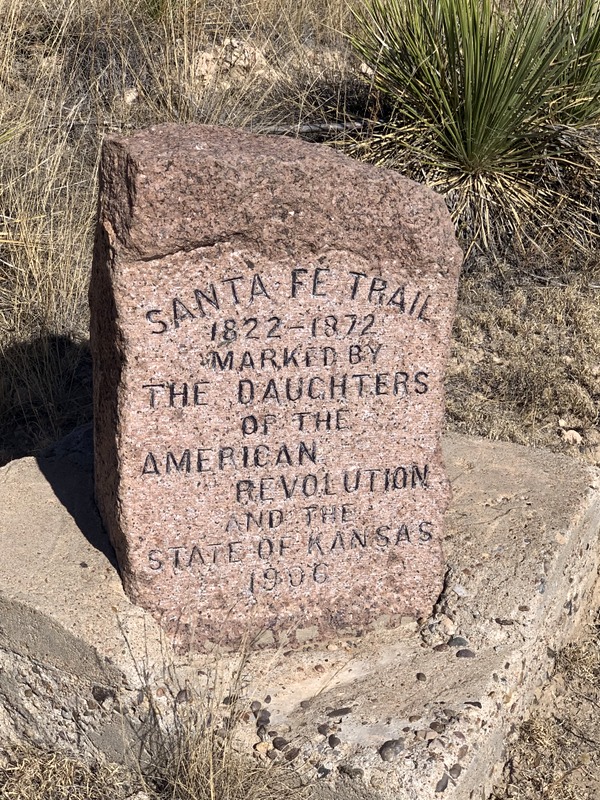
Santa Fe Trail
It was a cold morning – the coldest we’d experienced so far! Once the sun came up though, it warmed quite quickly, and the birds became more active. An immature Northern Shrike pursuing an American Tree Sparrow made for an exciting start to the day, with the sparrow ultimately evading capture. With a little trying we at last located a Rock Wren at Point of Rocks, getting good scope views in the morning sun. Two Rufous-crowned Sparrows then posed nicely for us, allowing for much closer scope views and photographs.
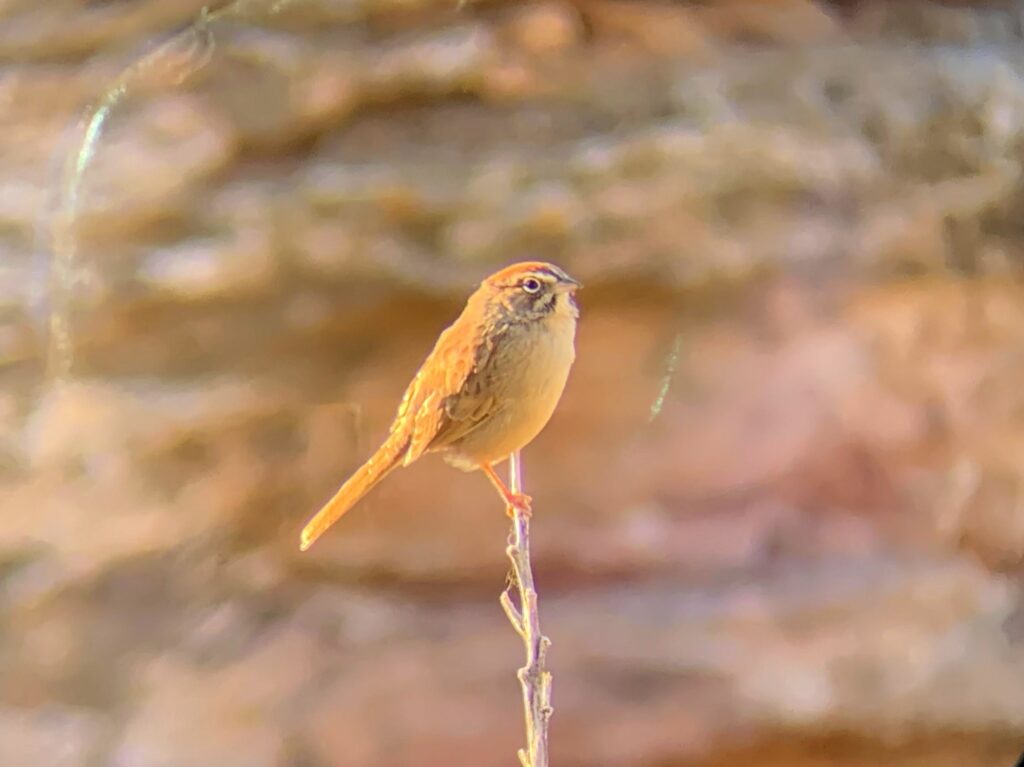
Rufous-crowned Sparrow
Middle Spring was bone-dry, but this was another historically significant place for Native Americans, westward moving settlers, as well as wildlife. There weren’t many birds for us there, so we continued moving from place to place, finding Marsh Wren, Loggerhead Shrike, and several different longspur flocks which were frustratingly either too high or in too harsh a light to get good enough looks at to ID (although they were probably Chestnut-collared).
After lunch in Elkhart, we crossed the border into Oklahoma to work on our state lists. One of our first OK birds was another Ferruginous Hawk which gave us good in-flight views, and a short while later we had found our first Chihuahuan Ravens and a herd of about 30 Pronghorn! The water treatment plant in Boise City had a pile of waterfowl on it – mostly geese, but overall, there was a nice diversity of stuff including a single drake Common Merganser. En route back to Kansas we noticed a very large raptor on a utility pole, dwarfing a nearby Chihuahuan Raven. A quick glance through the scope confirmed the suspicion – a Golden Eagle! With this rare, massive raptor essentially being our last bird of the day, we made our way back to Hugoton, where we had a nice, final dinner of the trip at a Bonnie & Clyde themed restaurant.
Our final morning was mostly spent driving as we needed to get back to the Wichita airport by mid-day. After an early breakfast we began the journey back east. Lake Coldwater made a perfect halfway, stopping point, and had a nice selection of waterfowl to finish up the tour with – Mallard, Bufflehead, Gadwall, Hooded Merganser, plus a Bald Eagle.
Our tour finishes up with a total of 121 bird species, including many of our main targets – Whooping Crane, Golden Eagle, Rough-legged & Ferruginous Hawks, Prairie Falcon, Loggerhead & Northern Shrikes, Smith’s & Lapland Longspurs, Yellow-headed Blackbird, Chihuahuan Raven, Marsh, Sedge, & Rock Wrens, and 13 species of sparrow (including LeConte’s, Rufous–crowned, Lincoln’s, Harris’s, Fox, White-crowned, and more), among thousands of waterfowl, pelicans, gulls, and Sandhill Cranes. We had excellent luck with mammals as well, finding bison, pronghorn, both mule & white-tailed deer, black-tailed jackrabbit, and black-tailed prairie dog, among others. We depart Kansas, indeed with memories of its great birds and wildlife, but also of its spectacular sunrises and sunsets, as well as its fascinating, diverse landscape that well and truly dispels the myth that ‘Kansas is flat.’
A few more birds…

American Bittern
by Kitti Reynolds
Golden Eagle
by Kitti Reynolds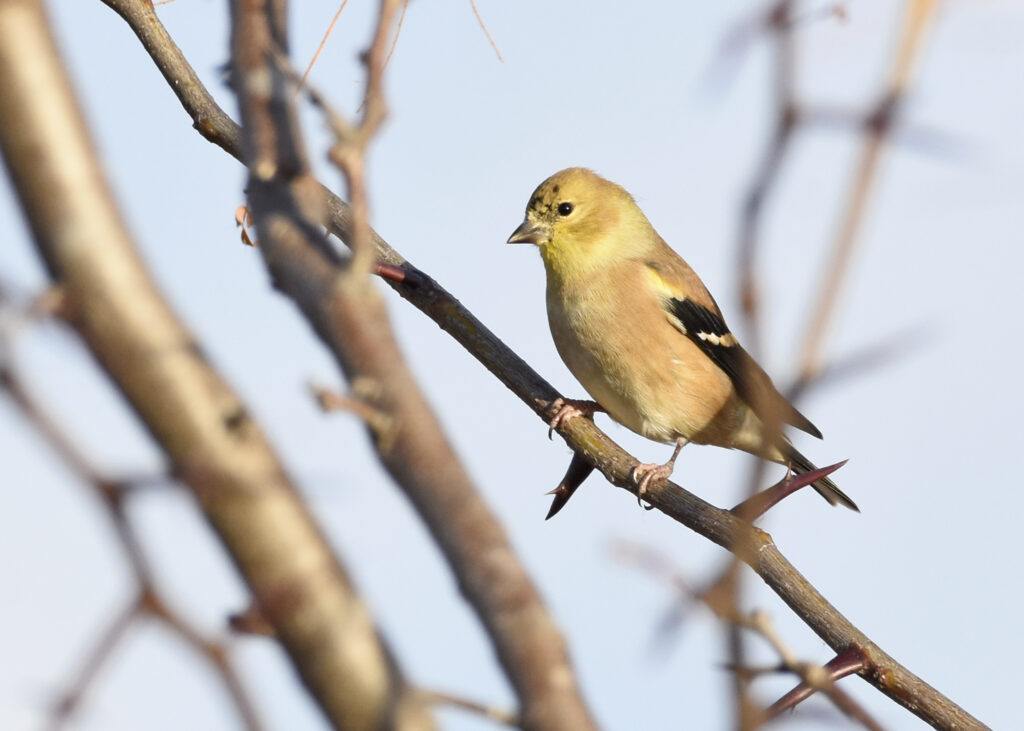
American Goldfinch
by Dawn Macheca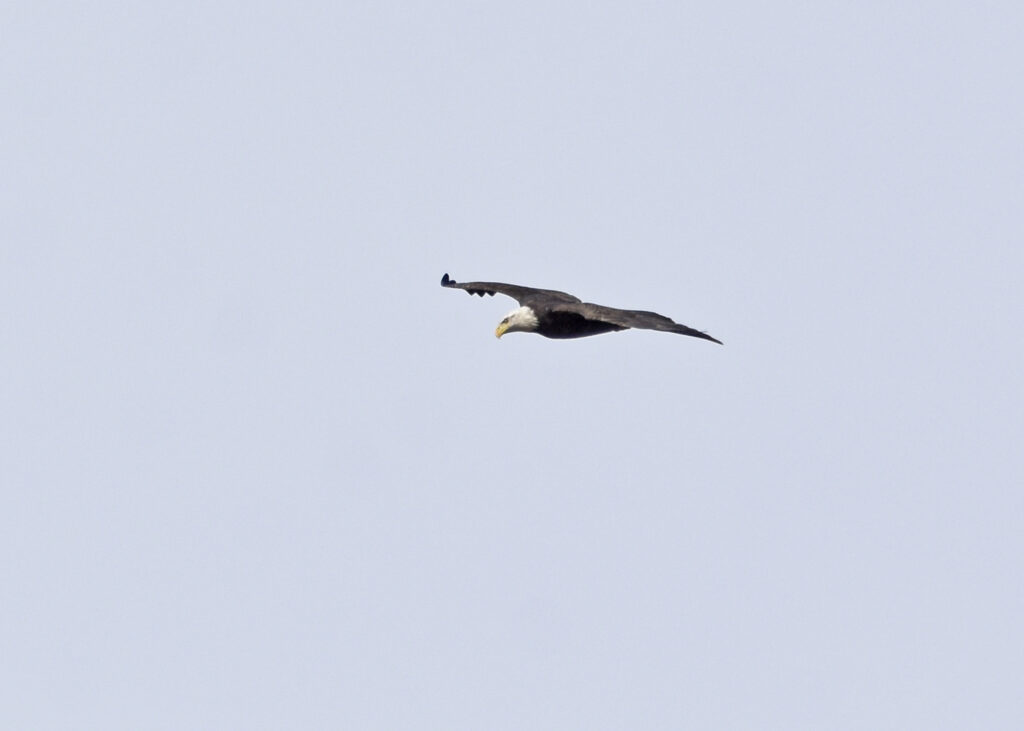
Bald Eagle
by Dawn Macheca
Golden-crowned Kinglet by Dawn Macheca 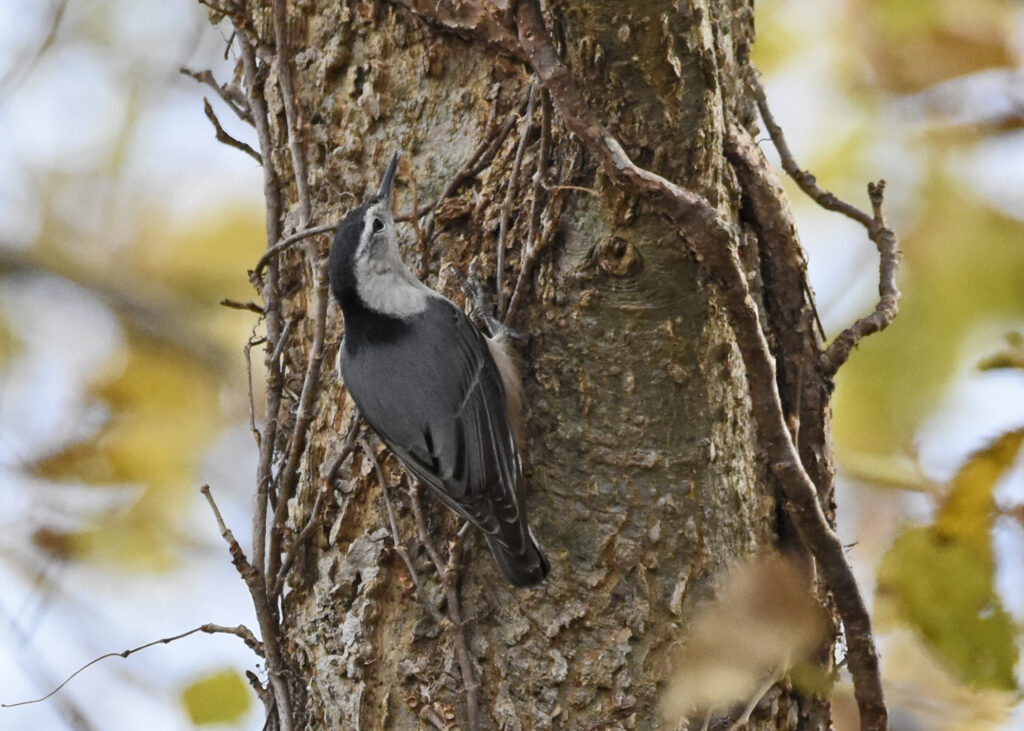
White-breasted Nuthatch by Dawn Macheca 
Red-tailed Hawk
by Dawn Macheca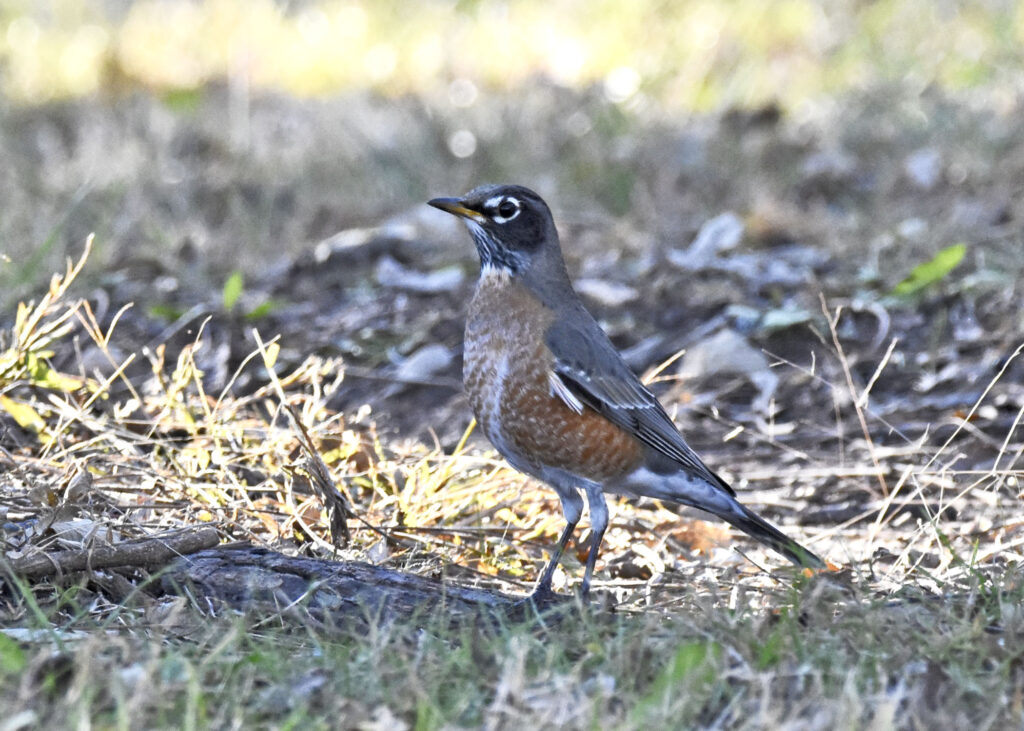
American Robin
by Dawn Macheca
Brown Creeper
by Dawn Macheca


